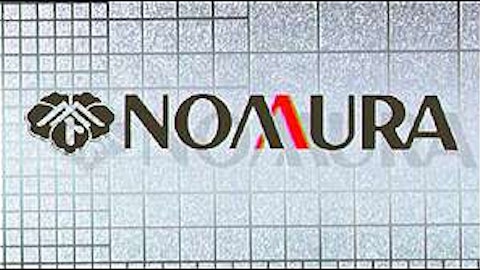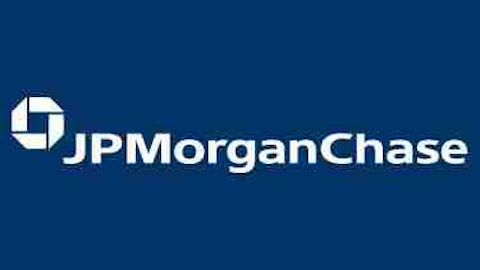
The vampire squid
Rolling Stone magazine famously called Goldman Sachs Group Inc (NYSE:GS) a vampire squid, which brought notoriety but not too much damage to its overall business. The company continues to be a league leader in securities underwriting and is one of the few competitors that is expanding offices globally. Warren Buffett has maintained a large stake in the firm, as part of his 2008 strategic investment, adding further credence to Goldman Sachs Group Inc (NYSE:GS)’s story.
In its latest fiscal year, Goldman posted solid financial results, with increases in revenues and operating income of 18.6% and 81.7%, respectively, versus the prior year. While its revenue growth was affected by one-time asset sales, Goldman Sachs Group Inc (NYSE:GS) generated revenue increases in all of its business segments, including its all-important institutional client services unit. More importantly, Goldman’s operating margin increased significantly, due to its renewed focus on effectively managing its compensation costs, an area of intense media scrutiny during the financial crisis.
Morgan’s legacy
Meanwhile, Morgan Stanley (NYSE:MS) has also benefited from the multi-year rebound in equity markets, despite still working through its past issues. The company has sold off non-core businesses over the past few years, like its Van Kampen mutual fund and Saxon mortgage servicing units, while further investing in its wealth management joint venture with Citigroup. In addition, Morgan Stanley (NYSE:MS) continues to try to reduce its loss exposure to legacy residential mortgage backed securities, with roughly $20 billion in remaining exposure as of December 2012.
In its latest fiscal year, Morgan Stanley (NYSE:MS)’s reported results showed substantial year-over-year declines, due to debt valuation adjustment charges in its securities businesses. However, its adjusted performance painted a better picture, as principal trading revenues rose and assets in its large wealth management venture reached $1.9 trillion. Like Goldman Sachs Group Inc (NYSE:GS), Morgan Stanley (NYSE:MS) is revamping its compensation practices, its largest cost center, which should lead to more rational pay rates and a more profitable company.
The industry’s future
All is not rosy for the investment banking giants, though, as more stringent restrictions on the companies’ activities are still being phased in over time. Specifically, the federal Dodd-Frank Act’s requirement to eliminate proprietary trading and to move over-the-counter derivative markets onto regulated exchanges will undoubtedly eliminate profit centers for both Goldman Sachs Group Inc (NYSE:GS) and Morgan Stanley (NYSE:MS). In addition, the companies’ recent results show continued deterioration in commission revenue, as a portion of their customer base opt for cheaper trading platforms.
As such, investors might want to look at the firm that helped to get the ball rolling on cheap commissions back in 1975, Charles Schwab Corp (NYSE:SCHW). The company’s mission has always been to empower investors with low costs and innovative tools, like its no-transaction fee OneSource marketplace for mutual funds. While keeping its commissions low, Schwab has also been transitioning into a full-service investment firm, offering portfolio advisory and bank lending products.
In its latest fiscal year, Charles Schwab Corp (NYSE:SCHW) reported marginal growth, with increases in revenues and operating income of 4.1% and 4.2%, respectively, compared to the prior year. While the company’s top line was negatively impacted by lower trading levels, with daily average revenue trades down 7%, it continued to increase its industry market share, with client assets of nearly $2 trillion as of December 2012. Schwab’s asset gathering process, a consequence of its high-tech, high-touch account opening procedure, creates a captive customer base that the company should be able to up-sell on its new advisory fee services.
The bottom line
The investment bank giants are priced at low price to book multiples, despite strong stock price gains over the past twelve months. However, there are potential minefields ahead for Goldman Sachs Group Inc (NYSE:GS) and Morgan Stanley (NYSE:MS), with rising regulations and falling commission prices likely to persist indefinitely. Thus, investors should pass them by and stick with Charles Schwab Corp (NYSE:SCHW), the investment brokerage that continues to challenge the status quo.
The article Should You Invest in the Investment Bank Survivors? originally appeared on Fool.com and is written by Robert Hanley.
Robert Hanley has no position in any stocks mentioned. The Motley Fool recommends Goldman Sachs. Robert is a member of The Motley Fool Blog Network — entries represent the personal opinion of the blogger and are not formally edited.
Copyright © 1995 – 2013 The Motley Fool, LLC. All rights reserved. The Motley Fool has a disclosure policy.




